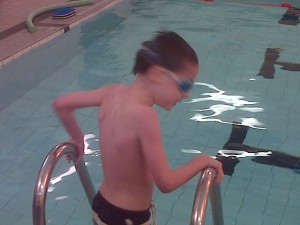Assistive technology is an umbrella term, used for technology that enables people with medical disabilities to perform tasks that they were formerly unable to accomplish. The emergence of mobile “assistive” technologies that work with the best wireless router technology has unlocked unprecedented new possibilities for communication, navigation, and independence of the disabled. There are many apps and gadgets that can help ease the difficulties of people with disabilities like visual impairment, speech impairment, and motion disorders, on a daily basis. In this post, we will be telling you about some of these gadgets and apps.

This Infographic – Top Trends in Wireless Technology Communication Devices – Was Created By Thetrustcompass.com
Refreshable Braille Displays
Refreshable braille displays use electromechanically controlled pins to convey information. They do this using software that gathers a Web page’s content and converts the words and images into a digital version of braille. It then represents the text with a touchable row of finger-size rectangular cells, lined up side by side, like dominoes. Each cell has six or eight small holes through which rounded pins can extend, and retract, to represent various braille characters. Each time a person reads the row of braille with his fingers (left to right) the pin configurations refresh to represent the next line of a Web page’s text, and so on.
Dot
Dot is the world’s first Braille smartwatch. It’s a wearable solution that is more affordable than e-Braille display devices. With the aid of Dot, blind people can access messages, tweets, and even books, and it syncs via Bluetooth to smartphones to retrieve and translate the text from an email, into Braille, for its wearer.
Talkitt
Talkitt is an innovative voice app which helps enable people with speech, language, and motor-skill disorders to communicate easily using their own voice. It translates unintelligible pronunciation into understandable speech, so we can understand what they meant to say, despite the speech impediment. Talkitt works by learning the speaker’s speech pattern and creating its own personal dictionary. Thus, it can work in any language.
Sesame Phone
Regular mobile phones are not equipped for the needs of people with limited mobility and motor skills. The Sesame Phone, a touch-free smartphone that is specially designed for people with disabilities, helps them access all the features of a smartphone, without even touching this device. Gestures are recognized as if you were using a finger to operate it: swipe, browse, play and more. Voice control is also added to provide a real hands-free experience on the phones. This phone is designed to be used with small head movements, tracked by its front-facing camera.
UNI
UNI is a two-way communication tool for the deaf, and it uses gesture and speech technology. It’s equipped with voice recognition software that converts speech into text. This tool works by detecting hand and finger gestures with its specialized camera algorithm, then converting it to text in very short time, to provide meaning to a given sign language. UNI also has a sign builder that can help the user create his own sign-language.
Finger Reader
The Finger Reader is a wearable tool to help read text. It has two functions: to help the visually impaired read printed text in a book or on an electronic device, and also to be used as a language translation tool.
A user can wear this device on a finger and then point it to a body of text, one line at a time. The small camera on the Finger Reader will scan the text and give real-time audio feedback of the words it detects. It also notifies the reader via vibrations when it is at the start of a line, end of a line, moving to a new line, or when the user is moving too far away from the text baseline.
BeMyEyes
BeMyEyes is an interactive app that can help blind people “see” the world. It works on a network of volunteers from around the world, who connect with the blind in order to give whatever help they require. It is an easy way to ask for help for simple tasks like checking on the expiry date on a milk carton. Volunteers receive requests for help, and if they are available, the request triggers a video call to volunteers so they can help the user.
AXS Map
Many public sites are not equipped with facilities for the disabled, like wheelchair-accessible restrooms. AXS Map is a crowd-sourced map that carries information and star-ratings about wheelchair-accessible ramps and restrooms in public places such as restaurants, hotels, shopping malls and more.
Transcence
Transcence is a great phone app for the deaf, especially applicable in group conversations. The deaf can communicate via one-on-one conversations using sign language or lip-reading, but not in a group-discussion. This is where Transcence comes into use. During a conversation or discussion, the app uses the microphone of each participant’s smartphone and catches what they are saying. It then converts the sounds into text in real time. Each speaker has its corresponding text bubble, differentiated by color, just like what one would find in a regular group messaging chat room.
Liftware
Liftware is a self-stabilizing handle which can be fixed on an eating apparatus such as a fork or a spoon. Liftware helps reduce the spilling of contents from the utensil before food reaches the patient’s mouth, by stabilizing up to seventy percent of the shaking or disruption. It’s very helpful for patients suffering from Parkinson’s disease or other forms of motion disorders that cause hand tremors.
Each Liftware comes with the stabilizing handle, a charger, and three utensils- a spoon, fork and soup spoon. Each charge can last for several meals, and the handle can be wiped down while the spoons and fork can be washed like a normal utensil.
Assist-Mi
Assist-Mi is an assistance application that helps disabled people to get assistance in real-time. It basically connects service providers and caregivers with the disabled who may need their assistance at a moment’s notice. Services include help in getting to work, to go shopping for essentials or for travel. It works on a registration based data-source.

